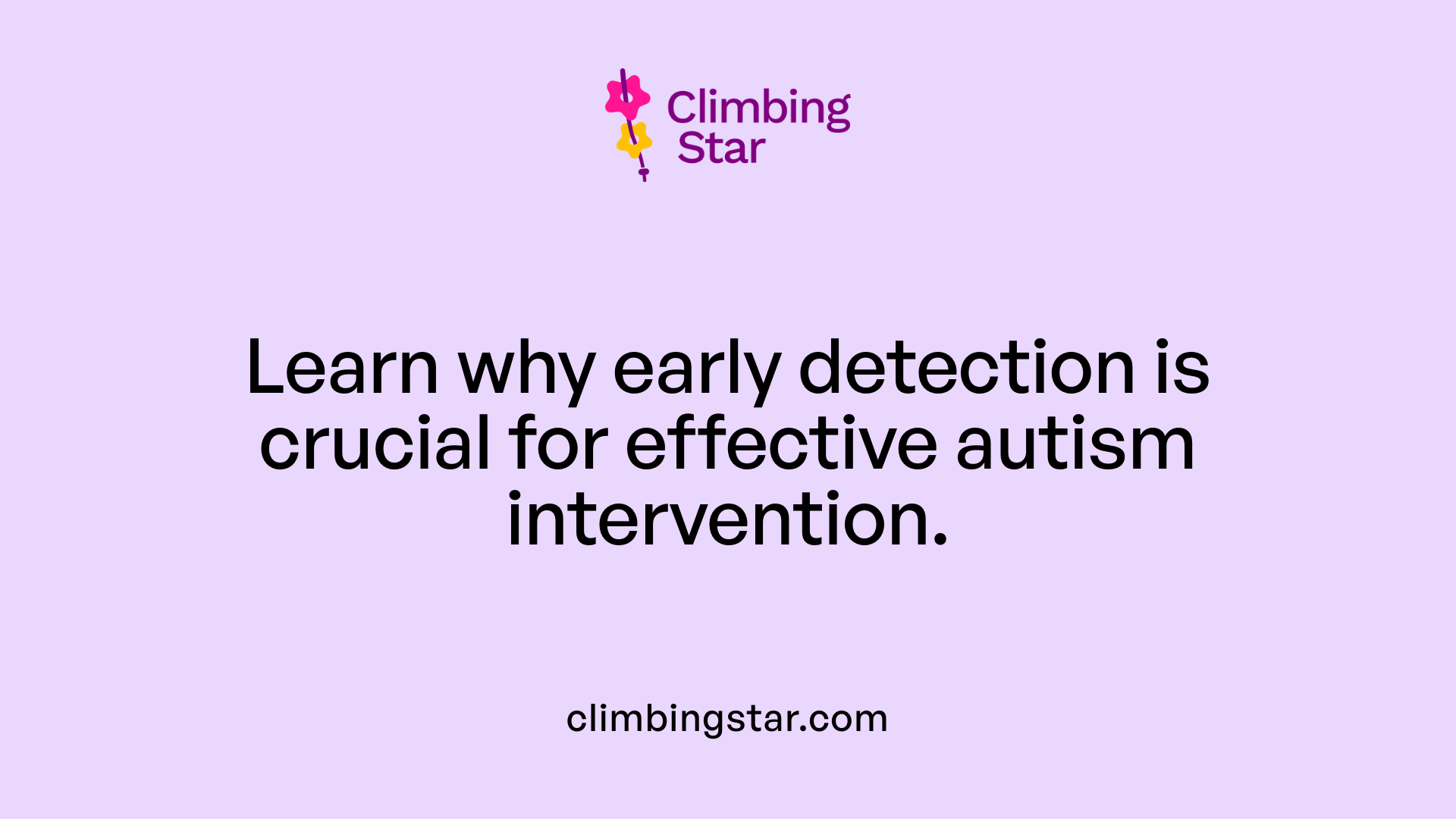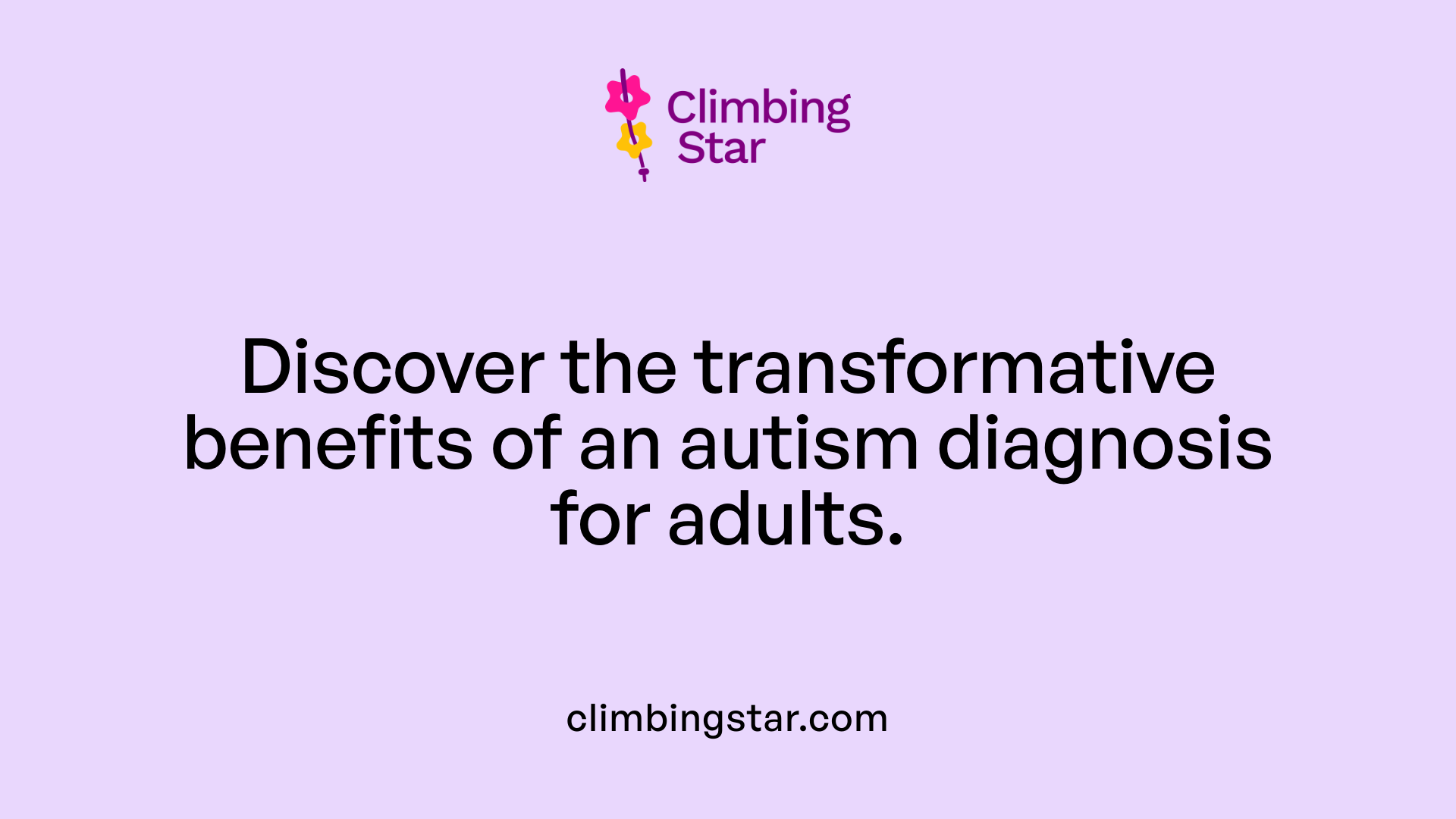Why Consider an Autism Diagnosis?
Deciding whether to pursue an autism diagnosis is a significant and sometimes complex choice for individuals and families. With increasing awareness of autism spectrum disorder (ASD) and advances in supportive therapies and services, understanding the tangible benefits and challenges of a formal diagnosis is crucial. This article explores the multifaceted value of receiving an autism diagnosis, detailing how it can unlock resources, foster self-understanding, and inform tailored interventions for both children and adults.
Understanding Autism: Signs, Symptoms, and Variability
What is autism and how does it present?
Autism Spectrum Disorder (ASD) is a developmental condition caused by differences in brain development. It primarily affects social interaction, communication, learning, and behavior. Signs usually appear before age 3, but the way symptoms show can differ widely between individuals and throughout life stages.
General characteristics of autism
People with autism often experience challenges in social communication, like difficulty holding conversations, sharing emotions, or understanding how others feel. They may avoid eye contact or struggle to interpret body language and social situations. Alongside these social challenges, repetitive behaviors such as rocking, hand-flapping, strong attachment to routines, and intense focus on specific interests are common. Sensory sensitivities—being overly sensitive or less reactive to sounds, lights, or textures—may also be present.
Symptoms in children
In children, common symptoms include avoiding eye contact, delayed response to their names, limited pretend play, repetitive movements, and sensory processing differences. These early signs are frequently detected using screening tools like the Modified Checklist for Autism in Toddlers (M-CHAT).
Symptoms in adults
Adults with autism may display similar social communication challenges but often develop masking behaviors to hide or compensate for their traits. This can lead to increased stress, anxiety, and depression. Mental health issues are more prevalent among autistic adults, and diagnosis may come later in life, providing clarity and access to support.
Variation in abilities among individuals with ASD
The spectrum nature of autism means ability levels range widely. Some individuals have high IQs and can live independently, whereas others may be nonverbal and require substantial support. Understanding this variation helps tailor support and interventions effectively.
| Aspect | Description | Examples |
|---|---|---|
| Social communication | Challenges with interaction and understanding emotions | Difficulty holding conversations, limited eye contact |
| Repetitive behaviors | Repetitive movements, strict routines, focused interests | Rocking, hand-flapping, intense hobbies |
| Sensory sensitivities | Oversensitivity or undersensitivity to sensory input | Sensitivity to sounds, lights, or textures |
| Abilities | Range from independent living to requiring support | High IQ vs. nonverbal with support needs |
This variability underscores the importance of individualized assessment and tailored support to address each person's unique needs across their lifespan.
The Importance of Early Diagnosis in Autism

Why is early autism diagnosis important?
Early diagnosis of autism, usually between 18 and 24 months, is crucial because it opens the door to timely intervention during critical periods of brain development. Early detection leverages the brain's neuroplasticity, allowing therapies to modify neural pathways effectively and promote better developmental trajectories.
Screening tools
Various screening tools help identify autism symptoms early. The Modified Checklist for Autism in Toddlers, Revised with Follow-Up (M-CHAT-R/F) is among the most common and effective. Additionally, the Social Communication Questionnaire (SCQ) and other validated tools aid in recognizing early red flags such as limited eye contact, lack of response to name, and repetitive behaviors.
Early intervention therapies
Early intervention includes behavioral therapies like the Early Start Denver Model (ESDM) and Applied Behavior Analysis (ABA). These therapies have shown strong evidence in improving cognitive abilities, language skills, and social interactions in children with autism. Intensive behavioral interventions started between ages 2 and 3 have been associated with significant developmental gains and sometimes even lead to children no longer meeting criteria for autism spectrum disorder.
Long-term developmental outcomes
Accessing early diagnosis and intervention leads to improved long-term outcomes, such as better social communication, enhanced academic achievements, and greater independence. Tailored educational programs and specialized support services help children develop skills and reduce challenges. Studies suggest children with higher IQs, stronger language skills, and fewer repetitive behaviors at diagnosis particularly benefit from early therapies.
| Aspect | Details | Impact |
|---|---|---|
| Early Diagnosis Age | Typically 18–24 months | Enables early start of intervention leveraging sensitive developmental periods |
| Screening Tools | M-CHAT-R/F, SCQ | Facilitate detection of early signs like eye contact avoidance and limited social interaction |
| Intervention Therapies | ESDM, ABA | Improve cognitive, language, social skills; may reduce or eliminate autism diagnosis |
| Developmental Outcomes | Improved social skills, independence, tailored education | Better academic and social functioning, increased quality of life |
How an Autism Diagnosis Supports Tailored Educational and Therapeutic Services
How does an autism diagnosis support educational and therapy access?
An autism diagnosis is pivotal in unlocking essential educational and therapeutic services tailored to a child's unique needs. Once diagnosed, children gain access to specialized therapies such as speech therapy, occupational therapy, and behavioral interventions, which are fundamental for fostering growth and improving overall well-being.
Schools utilize the diagnosis to develop Individualized Education Plans (IEPs), specifically designed to accommodate the child’s strengths and challenges. These IEPs provide clear goals, targeted teaching methods, and necessary accommodations that help enhance the learning experience.
Furthermore, the diagnosis informs educators and therapists in designing personalized educational strategies. These strategies not only address academic challenges but also support social skill development, making education more effective and inclusive.
Overall, the autism diagnosis plays an essential role in ensuring that children receive appropriate support services and educational modifications, promoting success both academically and socially.
Applied Behavior Analysis (ABA) Therapy: An Evidence-Based Approach
What is Applied Behavior Analysis (ABA) therapy for autism?
Applied Behavior Analysis (ABA) therapy is a scientifically validated, evidence-based treatment designed to support individuals with autism. It focuses on helping people acquire important skills while reducing behaviors that may interfere with learning or functioning. ABA therapy uses structured, individualized programs to target areas such as communication, social skills, and daily living activities.
What is the science behind ABA?
The science behind ABA is rooted in behavioral psychology, which studies how behaviors are learned and maintained. ABA interventions use techniques such as positive reinforcement—rewarding desired behaviors to encourage repetition—and precise methods like Discrete Trial Training and Pivotal Response Treatment. These approaches break down complex skills into smaller, manageable steps, promoting gradual learning.
What is the role of behavior analysts in ABA therapy?
Qualified professionals, particularly Board Certified Behavior Analysts (BCBAs), oversee ABA therapy. They assess each individual's needs and design tailored treatment plans. Behavior analysts continuously monitor progress and adjust techniques to maximize effectiveness. Their focus is not on forcing conformity but on fostering independence and meaningful engagement in daily life.
ABA therapy is intensive and highly personalized, making it one of the most recognized interventions for supporting growth and skill development in individuals with autism.
Key Components and Techniques Used in ABA Therapy
What Are the Key Components and Techniques Used in ABA Therapy for Autism?
Applied Behavior Analysis (ABA) therapy is a widely used approach to support individuals with autism by teaching new skills and modifying behaviors through positive reinforcement. It involves careful data collection and analysis of environmental factors that influence behaviors, ensuring interventions are tailored and effective.
ABA incorporates several structured teaching methods:
Discrete Trial Training (DTT): This technique breaks skills into small, achievable steps, teaching each step systematically with clear instructions, a response from the learner, and immediate reinforcement.
Pivotal Response Treatment (PRT): PRT focuses on enhancing pivotal areas of a child's development such as motivation and response to multiple cues. It uses naturalistic interactions to encourage communication and social skills.
Natural Environment Teaching (NET): NET emphasizes learning in everyday settings, promoting skills by using natural contexts and the child’s interests to reinforce behaviors.
Beyond these methods, ABA therapy includes:
- Shaping: Gradually reinforcing successive approximations toward a target behavior.
- Modeling: Demonstrating a behavior for the learner to imitate.
- Prompting and Fading: Providing cues or assistance initially, then systematically reducing support to encourage independence.
Techniques like behavior chaining (linking learned behaviors into sequences) and Functional Communication Training (FCT) (teaching appropriate communication to replace challenging behaviors) are also crucial components.
Board Certified Behavior Analysts (BCBAs) monitor progress and adjust techniques based on ongoing assessments to support meaningful and lasting improvements in communication, social interactions, and daily living skills. This individualized and evidence-driven approach plays a significant role in helping individuals with autism reach their full potential.
Who Provides ABA Therapy and Their Qualifications

Who Typically Provides ABA Therapy and What Qualifications Do These Professionals Have?
ABA therapy is primarily delivered by professionals known as Board Certified Behavior Analysts (BCBAs). These specialists have graduate-level degrees in fields related to behavior analysis, psychology, or education, and have undergone extensive coursework and supervised practical experience in Applied Behavior Analysis. Beyond education, they must pass a rigorous certification exam administered by the Behavior Analyst Certification Board (BACB). This certification ensures they meet national standards and adhere to ethical guidelines.
Additionally, some licensed psychologists, counselors, or social workers with specialized training in ABA may also provide therapy. Many states require behavior analysts and other practitioners to hold licensure, which involves meeting additional requirements for education, examination, and ongoing professional development.
Training and Certification Requirements
To become a qualified ABA therapist, candidates must:
- Obtain a relevant graduate degree, often at the master’s level or higher.
- Complete extensive ABA-focused coursework and supervised fieldwork.
- Pass the BCBA certification exam.
- Maintain licensure as required by their state.
- Engage in continuing education to stay updated on evidence-based practices.
Importance of Qualified Therapists
Qualified and well-trained therapists are crucial for effective ABA treatment. They employ data-driven strategies and carefully tailor intervention plans to meet the specific needs of each child. Moreover, establishing a strong therapeutic relationship is vital; families should consider credentials and experience alongside a therapist’s ability to communicate and connect with their child.
Choosing providers with recognized certification and proven expertise ensures the intervention is ethical, effective, and supportive of the child's growth and development.
Benefits of ABA Therapy for Individuals with Autism and Their Families
How does ABA therapy benefit individuals with autism and their families?
Applied Behavior Analysis (ABA) therapy is a widely recognized approach that has helped many individuals with autism develop crucial skills and improve their overall quality of life. Through personalized, evidence-based techniques, ABA therapy enhances communication skills, enabling children who may have difficulty speaking to express themselves more clearly.
Social skills also improve under ABA therapy, promoting better interactions with peers and family members. These advances often lead to greater independence in daily activities such as dressing, eating, and self-care, helping individuals participate more fully in diverse settings, including mainstream educational environments.
Families benefit greatly from ABA as well. The therapy process empowers parents and caregivers by increasing their understanding of their child's unique behaviors and challenges. This knowledge provides them with effective strategies to reinforce skills and manage behaviors at home, fostering a nurturing environment.
Moreover, ABA promotes strong collaborative partnerships between therapists and families. These supportive therapeutic connections establish consistent communication and mutual goal-setting, which contribute to sustained progress and emotional support for everyone involved.
Overall, ABA therapy not only improves developmental outcomes for individuals with autism but also strengthens family resilience and engagement, creating a foundation for long-term success and well-being.
Typical Duration and Frequency of ABA Therapy Sessions

What is the typical duration and frequency of ABA therapy sessions?
Applied Behavior Analysis (ABA) therapy is a widely used intervention for individuals with autism, and its duration and frequency are carefully tailored to each person's needs. Typically, ABA therapy spans from three to five years but can vary based on an individual's progress and specific goals.
Sessions generally occur between two and five times per week. Each session can last anywhere from 3 to 7 hours depending on the child's age, needs, and tolerance. This translates to weekly therapy hours that usually range from 10 to 40 hours.
Younger children or those with more significant developmental challenges often receive more intensive therapy, commonly between 20 to 40 hours per week. This intensity aims to leverage critical periods of neuroplasticity to maximize developmental gains.
Individualized plans guide the scheduling and intensity of therapy. These plans are developed collaboratively by clinicians, families, and sometimes insurance providers. They take into account factors such as the child’s clinical progress, family circumstances, and available resources to optimize outcomes and ensure sustainability.
Adjustments to session length and frequency are common to respond to changing needs over time. Flexibility helps to balance effective intervention with quality of life for both the child and family.
The Controversies and Criticisms Surrounding ABA Therapy

Are there any controversies or criticisms associated with ABA therapy?
Applied Behavior Analysis (ABA) therapy has a complex history marked by controversy. Early approaches sometimes employed aversive methods such as electric shocks aimed to suppress undesired behaviors. These practices are now widely discredited and have contributed to longstanding concerns within the autistic community and mental health advocates.
Critics argue that traditional ABA often emphasizes compliance and conformity to neurotypical standards, potentially suppressing authentic autistic traits. This focus can inadvertently lead to psychological harm and negatively affect an individual's sense of identity. Many neurodiversity advocates highlight these ethical issues, viewing such approaches as coercive and dismissive of autistic differences.
In response to these criticisms, modern ABA practices have shifted toward more ethical, individualized, and positive reinforcement techniques. Therapists now aim to support autistic individuals by promoting skills that enhance well-being without forcing conformity. However, debates continue around whether even contemporary ABA inadvertently encourages masking of autistic traits, which can lead to increased stress and anxiety.
Despite these concerns, ABA therapy remains a widely endorsed intervention, with ongoing efforts to reform and align it with neurodiversity principles. This evolving landscape reflects a broader dialogue about balancing effective support with respect for autistic identities.
Benefits of an Autism Diagnosis for Adults

Rising Adult Diagnosis Rates
In recent years, there has been a remarkable increase in autism diagnoses among adults, particularly those aged 26 to 34. Studies show a 450% rise in diagnoses from 2011 to 2022, reflecting growing awareness and improved recognition of autism spectrum disorder (ASD) beyond childhood. This trend underscores the importance of identifying autism in adulthood to address unique challenges experienced by this population.
Access to Tailored Therapies and Resources
Receiving an autism diagnosis as an adult opens doors to specialized support tailored to individual needs. Therapies such as cognitive behavioral therapy (CBT) can effectively reduce co-occurring anxiety and depression common in autistic adults. Moreover, access to medications for related symptoms, social support networks, employment assistance, and community engagement resources become available, fostering holistic well-being.
Workplace Accommodations
A formal autism diagnosis facilitates reasonable adjustments at work, such as flexible scheduling, sensory-friendly environments, and communication support. These accommodations help adults with ASD to thrive professionally by reducing stressors and creating inclusive work settings that capitalize on their strengths.
Self-Acceptance
Perhaps one of the most profound benefits of diagnosis is the opportunity for self-understanding and acceptance. Many autistic adults experience a newfound language to explain lifelong feelings of being different. This clarity encourages self-advocacy and connects individuals with supportive communities where shared experiences promote emotional support and reduce isolation. Living authentically often becomes possible once masking behaviors are no longer necessary, improving mental health and quality of life.
Challenges and Psychological Impact of Autism Diagnosis in Adulthood
What challenges do adults face when seeking an autism diagnosis?
Adults seeking an autism diagnosis encounter several significant obstacles. One of the major challenges is the limited availability of specialists who are trained to assess autism in adults. This scarcity can lead to long waiting times before an individual can be evaluated. The diagnostic process is also costly, with expenses ranging between $2,000 and $6,000, posing a financial barrier for many.
Moreover, the psychological impact of receiving a diagnosis later in life can be considerable. Adults often experience increased stress and anxiety as they come to terms with their new understanding of themselves. The diagnostic journey may unearth emotions and questions about their past challenges and experiences.
How do mental health and masking affect adults with autism?
Many adults with autism engage in masking behaviors, which involve concealing their autistic traits to fit in socially. While masking might help navigate social situations temporarily, it often leads to exhaustion and worsened mental health. Conditions such as anxiety and depression are common among autistic adults and may be intensified by the effort of constant masking.
Another psychological challenge is the "double empathy problem," which refers to the mutual difficulties in understanding and communication between autistic and non-autistic individuals. This mismatch can result in misunderstandings and social isolation, making accurate diagnosis and support crucial for improving social interactions.
Receiving a diagnosis can alleviate some of these challenges by providing a framework for self-acceptance and access to supports that reduce the need for masking, thus improving mental health and quality of life.
Post-Diagnosis Support and Resources Across the Lifespan
What support is available after an autism diagnosis?
After receiving an autism diagnosis, individuals gain access to a broad spectrum of support services designed to enhance quality of life and independence. Vocational services play a vital role by helping adults with autism find and maintain meaningful employment. These programs often include job coaching and assistance in securing reasonable workplace accommodations like flexible hours or sensory-friendly environments.
Social support is equally important. Many diagnosed individuals join social groups or community networks that encourage connection with others who share similar experiences. These communities not only provide emotional support but also promote understanding of unique social challenges, such as the double empathy problem where autistic and non-autistic people may misunderstand each other.
Coaching aimed at improving executive functioning and communication skills is available to help individuals navigate daily tasks, organize activities, and enhance interpersonal interactions. These specialized services contribute to personal growth and foster greater independence.
Additionally, an autism diagnosis opens the door to legal protections under laws such as the Americans with Disabilities Act (ADA), which safeguard rights in educational settings and workplaces. Individuals can advocate for reasonable adjustments to ensure equitable access to resources and opportunities.
Mental health interventions are tailored to address challenges like anxiety and depression, which are common among autistic individuals. Therapies such as cognitive behavioral therapy (CBT) and mindfulness techniques support emotional well-being alongside other behavioral approaches.
Overall, these supports and resources create a comprehensive framework that nurtures development across the lifespan, empowering individuals with autism to thrive both personally and professionally.
Is an Autism Diagnosis Worth It?
An autism diagnosis offers essential clarity and access to specialized supports that can profoundly improve life outcomes for individuals across all ages. Early diagnosis unlocks critical interventions that capitalize on developmental windows, while adult diagnosis provides opportunities for understanding, acceptance, and tailored resources. Although the diagnostic journey can present challenges, including emotional and logistical hurdles, the benefits in accessing educational plans, therapies like ABA, workplace accommodations, and community belonging typically outweigh the drawbacks. Ultimately, whether for a child or an adult, an autism diagnosis often marks the beginning of a more informed and empowered path toward growth, inclusion, and self-understanding.
References
- Exploring the Pros and Cons of an Autism Diagnosis
- Autism: The challenges and opportunities of an adult ...
- Pros and cons of getting an autism diagnosis as an adult
- Benefits and harms of interventions to improve anxiety ...
- Deciding whether to seek an autism assessment
- Losing an autism diagnosis
- Early Diagnosis of Autism Spectrum Disorder: A Review ...
- Is It Worth Getting an Autism Diagnosis?
- Applied Behavior Analysis (ABA) Services | dmh.mo.gov







